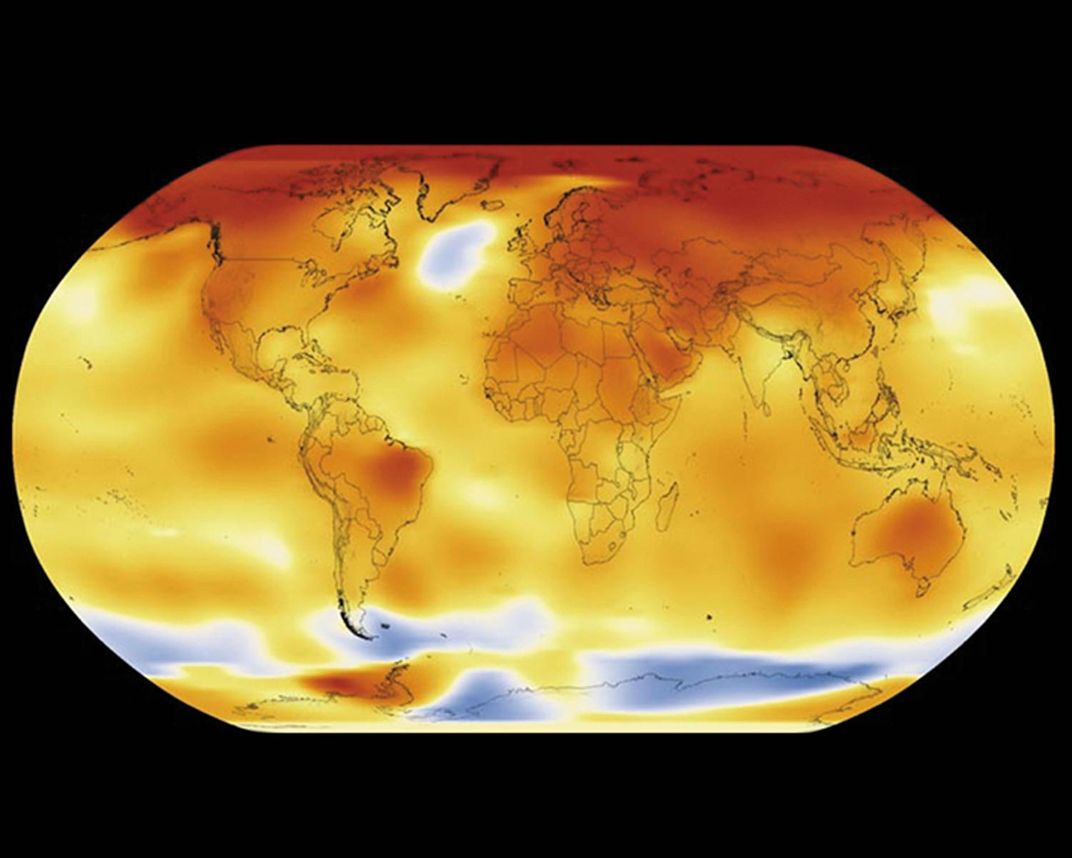Taking Earth’s Temperature
A single, precise number is harder to come up with than you’d think.
/https://tf-cmsv2-smithsonianmag-media.s3.amazonaws.com/filer/7b/af/7baff313-aae6-4874-87ba-4e0161dd9bfb/24h_am2017_earthtempandthundercloud_crop.jpg)
Ask NASA climate scientist Gavin Schmidt “What’s the temperature of Earth?” and he’ll tell the story about the museum visitor who wanted to know the age of a dinosaur on exhibit. A guard answers that it’s 65 million and 10 years old. How’d he get such a precise number? “He says, ‘Well, when I came here they said it was 65 million years old, and I’ve been here for 10 years now,’ ” Schmidt quips.
Scientists are able to estimate how much Earth’s temperature changes year to year very precisely—to an accuracy of 0.1 or even 0.01 of a degree. But don’t ask them to give the exact global temperature at any particular time.
“We don’t know the absolute temperature of the planet that well,” Schmidt says. “If you take one number that is not very well known and you add it to another number that is well known, it doesn’t suddenly become more accurate.”
The National Oceanic and Atmospheric Administration, which partners with NASA to produce an annual report on the planet’s climate, says that in 2016, Earth’s temperature rose above the 20th century average of 57 degrees Fahrenheit, making the planet about 58.7 degrees.
It’s that first number that’s tricky to pin down. Says Schmidt: “Think about the surface near you right now—different heights, different amounts of shadow, different surface types. Now expand that to mountains and countryside and cities—a huge variation of surfaces and conditions, which have large variations in temperature, even over very small distances. We just don’t have enough stations.”
For scientists, change over time tells them a lot more about the state of the planet than does a single absolute temperature. Overall, reports NOAA, average surface temperatures at measured stations in 2016 were 0.07 degree warmer than in 2015, making last year the hottest on record. (NASA reports a 0.21-degree increase. No matter who’s counting, it’s hotter.)
Since the start of the 21st century, the annual global temperature record has been broken five times: in 2005, 2010, 2014, 2015, and 2016. This year likely will be among the top five, though probably not a record-breaker.
Computer models show that the temperature increases are primarily due to carbon dioxide and other heat-trapping gases in the atmosphere. Scientists also model the effects of volcanic eruptions, changes in the amount of energy from the sun, air pollution, and other factors that affect climate, but the explanation that best fits observed conditions continues to implicate greenhouse gases.

